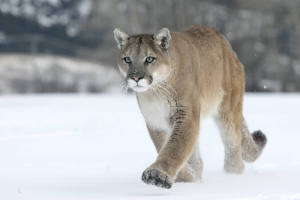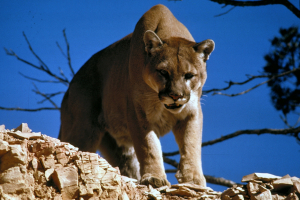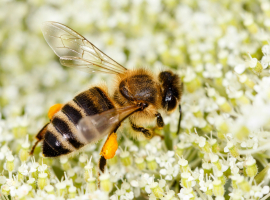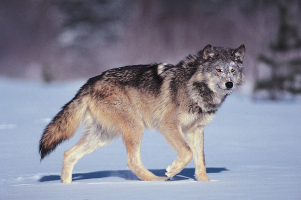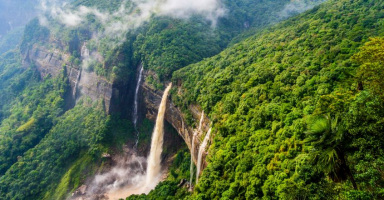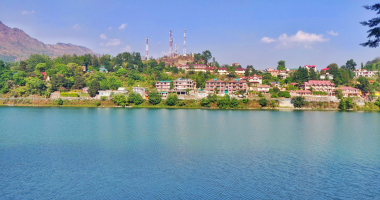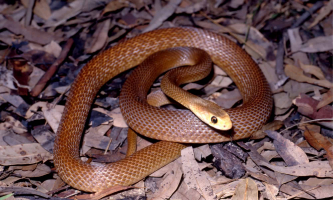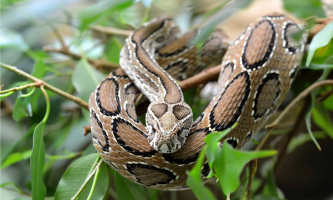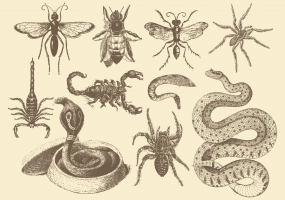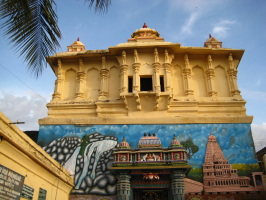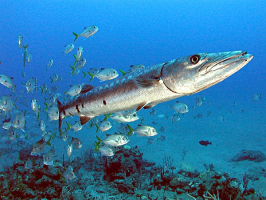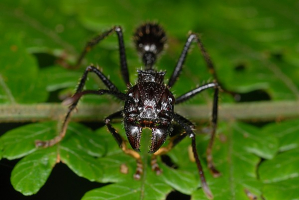Top 11 Most Dangerous Animals in India
The animal world is extremely diverse and rich. Many animals are impressed by their beautiful appearance, and friendly personality, there are also very ... read more...dangerous animals. Let's find out with Toplist the most dangerous animals in India!
-
One of the most dangerous animals in India is the Common krait. The highly venomous common krait, commonly referred to as the Bengali krait, is a species of snake that is native to the Indian subcontinent and belongs to the genus Bungarus. It is one of the "Big Four" snake species that are responsible for the majority of human snakebite cases in Pakistan, India, and Bangladesh.
The common krait can reach a maximum length of 1.75 m, although its typical length is 0.9 m. Males have substantially larger tails than females and are longer overall. The neck hardly stands out, and the skull is flat. The cylindrical body has a tail that tapers off. The tail is rounded and short. The eyes are barely distinguishable in real life due to their small size and rounded pupils. The lower lip margin has four shields along it, and the third and fourth supraoculars touch the eye. The head shields are typical and devoid of loreals. The vertebral row is noticeably larger and hexagonal, and the scales are highly polished, arranged in 15–17 rows. Caudals are complete, numbering 37–50, and ventrals range from 185-225.
Apply pressure to the place that has been bitten to keep it immobile if you have been bitten by a common krait. Go to the hospital very enough, even if it doesn't hurt. They can be found in a variety of environments, including homes with secret nooks and rainforests. Indian kraits are famous for devouring smaller kraits.
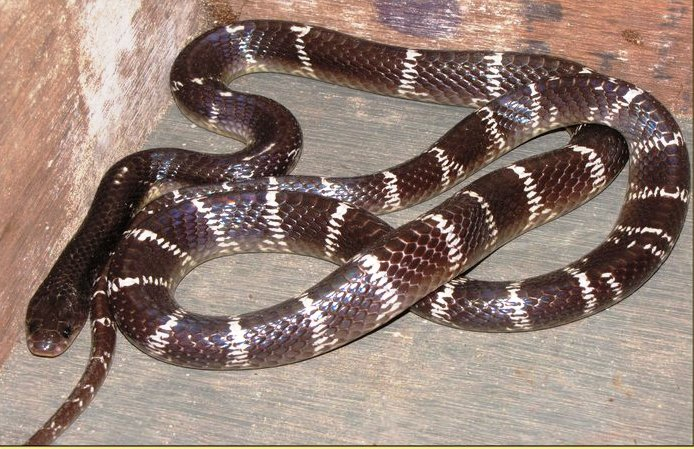
Photo: wikipedia 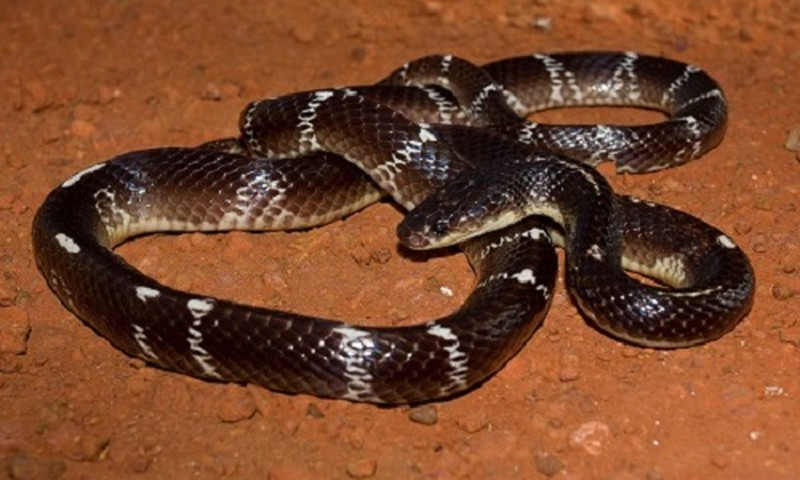
Photo:kienthuc.net.vn -
Another exceedingly dangerous animal native to India is the Bengal tiger, Panthera tigris. Due to its size, beauty, and cultural significance, it is also known as the "Royal Bengal tiger," but while being the largest and most beautiful of all big cats, it is also the deadliest, murdering over 80 people per year in India.
The Bengal tigers of the Sunderbans are notorious for this because it is the area with the largest Bengal tiger population and the scene of the majority of assaults. Some places have more "maneating" tiger incidences than others. The Garhwal Bengal tigers have also been dangerous to people.
Although Bengal tigers are among the most dangerous animals in India, people are far more destructive to Bengal tigers than vice versa. These creatures have been ruthlessly killed and their environment has been decimated by humans, forcing them to seek out areas and food sources they wouldn't normally use. You can learn more about why the Bengal tiger is endangered here. There are currently fewer than 2,000 Bengal tigers left in the wild.
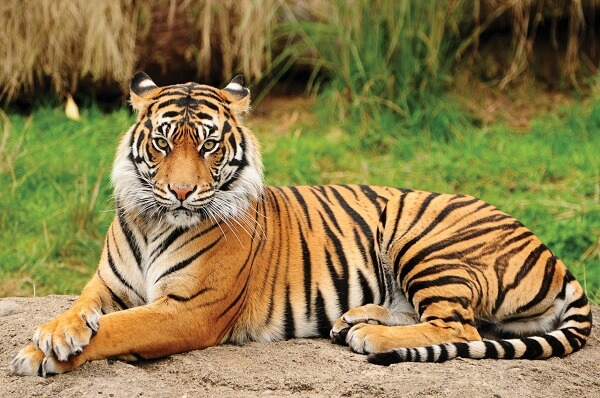
Photo: biologydictionary.net 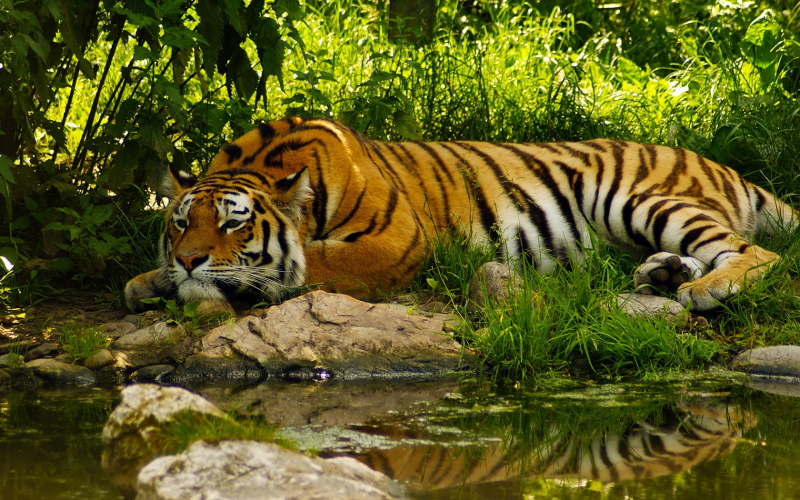
Photo: wikipedia -
The medium-sized Asian black bear, often referred to as the Asiatic black bear, moon bear, and the white-chested bear is a native bear species that has adapted largely to an arboreal existence. The Himalayas, southern Iran, the northern regions of the Indian subcontinent, China, the Far East of Russia, the Japanese islands of Honshu and Shikoku, and Taiwan are all places where it can be found. It is threatened by deforestation and poaching for its body parts, which are used in traditional medicine, and is classed as vulnerable on the IUCN Red List. The Asian black bear and the brown bear both live in the Himalayan area of India. The Asian black bear is the more hazardous of the two.
The Asian black bear has a vicious disposition and is capable of random attacks. Villagers in India's forests are more at risk since black bear attacks on humans are more common than brown bear assaults. Although they prefer to simply avoid human interaction, these Indian bears are liable to attack anyone they come across in what they regard to be their territory.
Since Asian black bears have a white mark on their chest that resembles a crescent moon, they are also known as "moon bears" and "white-chested bears." While black bears are omnivores, they favor fruits, vegetables, and honey; they will never attack a person for food.
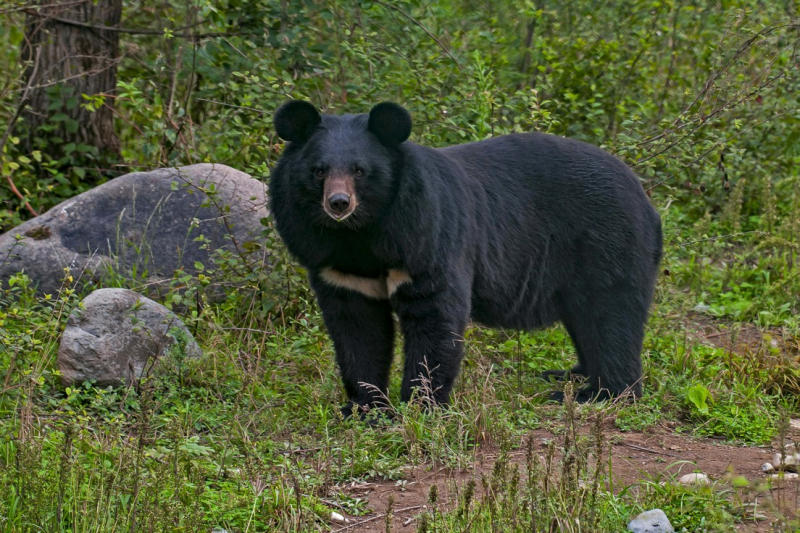
Photo: roundglasssustain.com 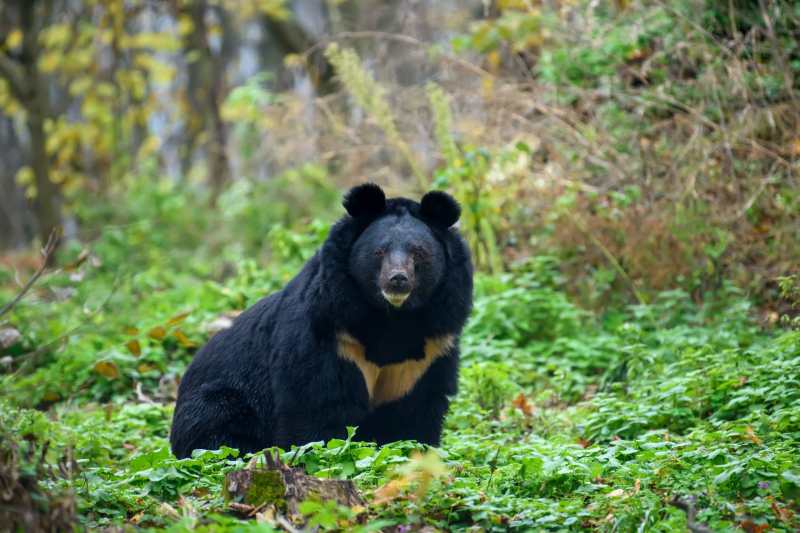
Photo: thethirdpole.net -
The leopard subspecies known as the Indian leopard are found throughout the Indian subcontinent. The IUCN Red List categorizes the species Panthera pardus as Vulnerable because populations have decreased as a result of habitat loss and fragmentation, poaching for the illicit trade in skins and other body parts, and persecution as a result of conflict situations. Along with the Bengal tiger, snow leopard, clouded leopard, and Asiatic lion, the Indian leopard is one of the large cats that can be found on the Indian subcontinent.
Around 400 individuals were said to have died at the hands of the Leopard of Panar at the turn of the 20th century, compared to more than 100 deaths at the hands of the Leopard of Rudraprayag. Jim Corbett, a well-known hunter and tracker of man-eating cats, pursued both man-eating leopards.
Such rampages are the exception, though. One of the most dangerous animals in India is the Indian leopard, however, attacks are frequently brought on by the leopard's need to target people in rural areas due to its shrinking natural habitat and lack of available prey. Human attacks have increased, not because leopards are naturally bloodthirsty but because they are convenient prey for them.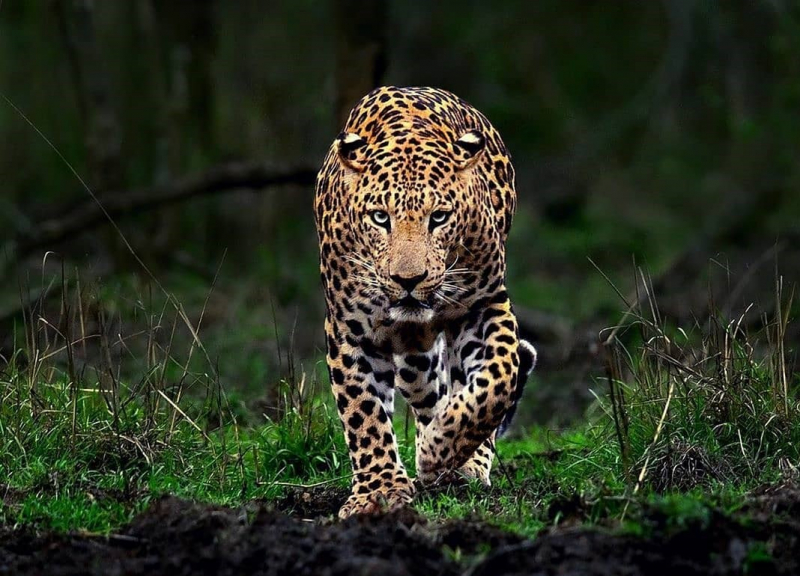
Photo: bigcatsindia.com 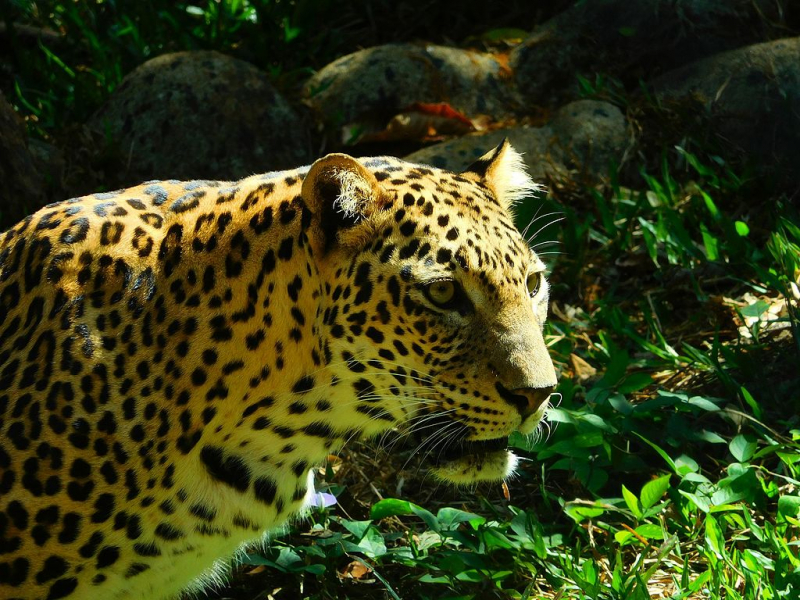
Photo: worldlandtrust.org -
The Asian elephant, commonly referred to as the Asiatic elephant, is the only species of Elephas that is still alive today. It is found throughout Southeast Asia, from India in the west to Nepal in the east. The largest living terrestrial animal in Asia is the Asian elephant. Due to a population drop of at least 50% over the previous three generations of elephants, or roughly 60–75 years, the Asian elephant has been categorized as Endangered on the IUCN Red List since 1986. The main threats to it are habitat loss, habitat degradation, habitat fragmentation, and poaching to Borneo in the east, Sumatra in the south, and the north.
Despite having the appearance of gentle giants, Asian elephants are actually quite violent when aroused, especially when they have calves and feel threatened. Native to the subcontinent of India, the Indian elephant lives in scrublands, tropical forests, and grasslands. Sadly, over the past few decades, the population has dropped by at least half.
Every year, wild Asian elephants go to the region of India in search of food, destroying any crops that stand in their way. Due to habitat loss and degradation, Asian elephants can wander into farms and human settlements. More than 100 individuals are thought to have perished in India as a result of elephant assaults. Between 2001 and 2006, 239 people were reportedly killed by elephants in the Assam state of the northeast.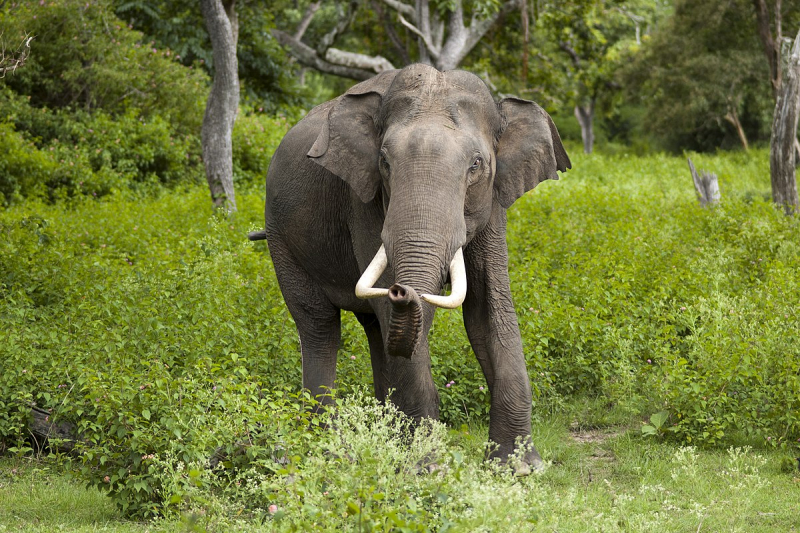
Photo: wikipedia 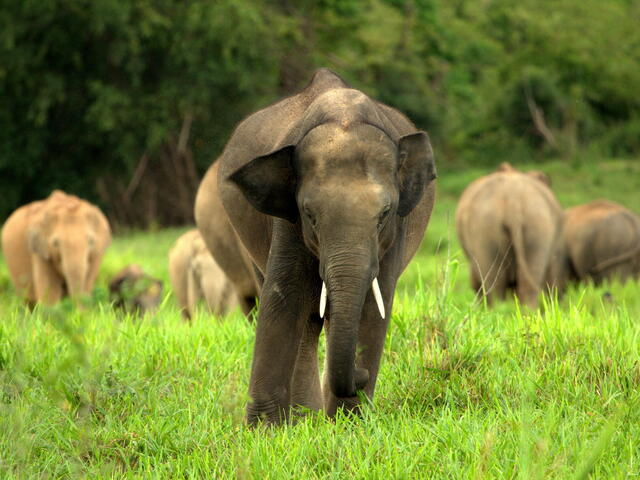
Photo: worldwildlife.org -
A species of scorpion belonging to the Buthidae family is the Indian red scorpion, often called the eastern Indian scorpion. The majority of India, eastern Pakistan, the eastern lowlands of Nepal, and most recently Sri Lanka are affected.
Body length ranges from 50 to 90 mm. the proximal edges of the pedipalp fingers on males are flexed. Pedipalps masculine manus is wider than female. Males have 30 to 39 pectinal teeth, whereas females have 27 to 34. Yellow and reticulated chelicerans are present. Legs and the metasoma are sparingly hirsute, compared to the highly hirsute pedipalps. Pedipalps patella is coated in short setae. Darker than the rest of the body, the mesosoma. Segments of metasomal have dark ventral carinae. Chela lacks carinae. thickly and extremely finely granular dorsum Two small, unnoticeable marginal carinae are present on the dorsum. Granulated Telson is used.
India is home to 86 different kinds of scorpions. 50 of these are fatal. The 23 cm long gigantic forest scorpion, although being the largest scorpion in the world, isn't particularly venomous.
The smaller Indian red scorpion, though, is known to claim the lives of 50 to 80 individuals each year in India. Given that its venom induces pulmonary edema, it is regarded as the most hazardous scorpion in the entire globe as well as one of the most dangerous creatures in India. Prazosin is used to cure an Indian red scorpion sting.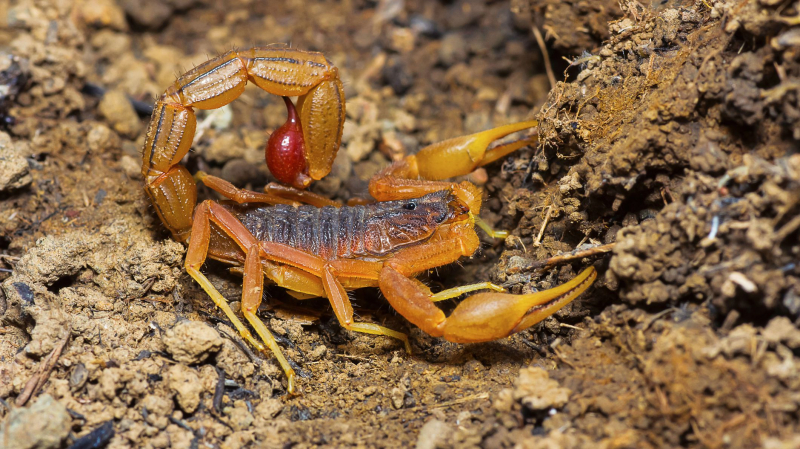
Photo: thoughtco.com 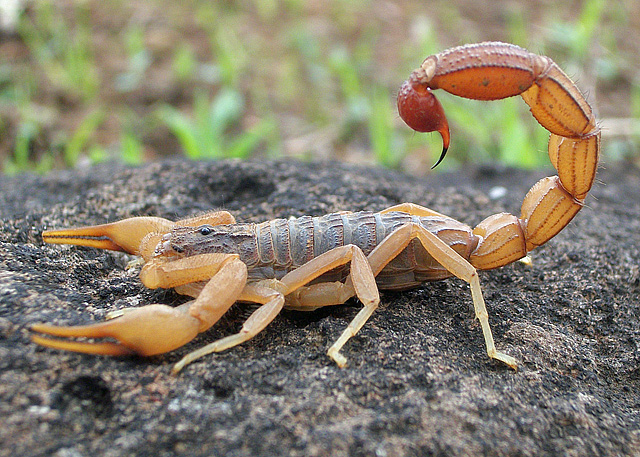
Photo: wikipedia -
In areas where huge crocodilians are native and there are human populations, crocodile attacks on humans are frequent. According to estimates, crocodilians kill roughly 1,000 people annually. Because they strike before a human can even respond, the larger species of crocodiles can be fatal. The two most lethal crocodile species are the saltwater and Nile varieties, which have claimed countless lives in South East Asia and Africa.
With a length of 6.3 m, the saltwater crocodile is the largest terrestrial predator and most dangerous reptile in the world. It can be found in mangrove swamps, lagoons, and deltas and is deadly. They can be found along India's eastern coast.
Crocodiles are lake and river creatures that can be very deadly when they are around. In Kerala, the Cauvery River, and the Andaman Islands, muggers or Indian crocodiles have been known to attack people. At 5 m long, they are shorter than saltwater crocodiles. Crocodile is one of the most dangerous animals in India.
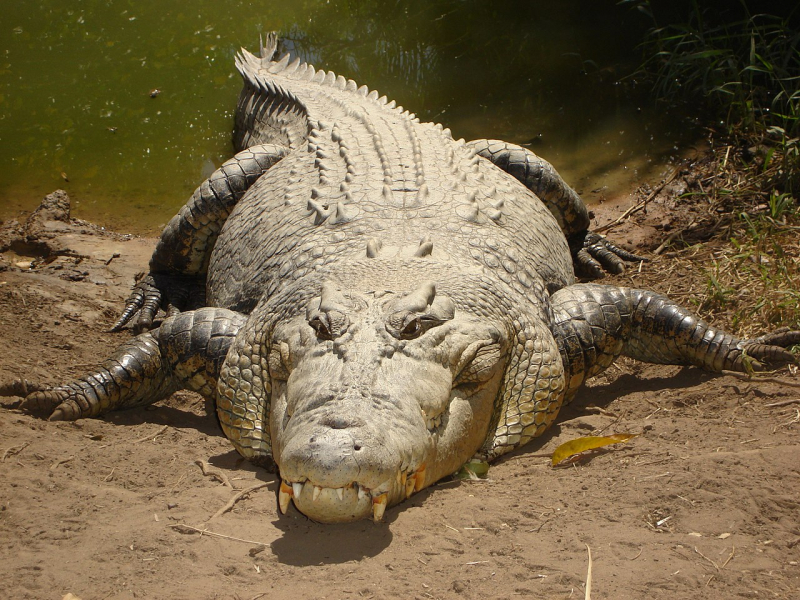
Photo: wikipedia 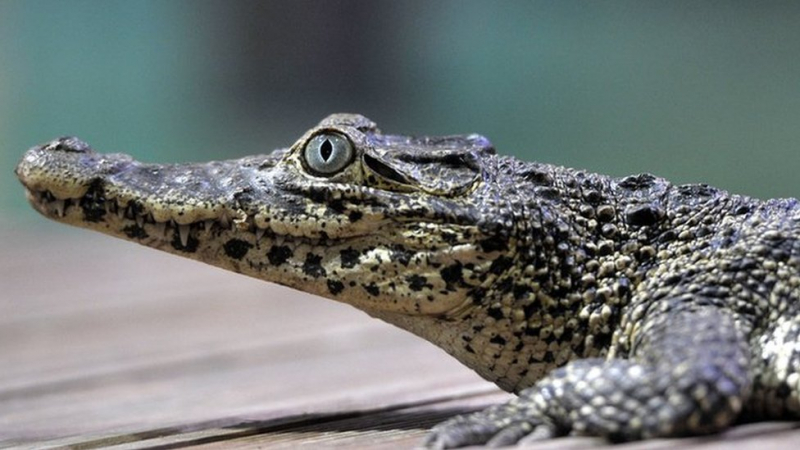
Photo: bbc.com -
Cnidarian invertebrates known as box jellyfish can be identified by their body shape. Some box jellyfish species generate powerful venom that is released upon contact with their tentacles. Some species, including Chironex fleckeri, Carukia barnesi, Malo kingi, and a few others, sting people very painfully and frequently result in death.
The box jellyfish's tentacles contain venom that can paralyze a victim and cause cardiac arrest in about one or two minutes by attacking the neurological system within minutes. A human can only experience shock because of the sting's agony. Box jellyfish can be lethal to people and may not be apparent in muddy regions because they lay their eggs in the estuaries of northern Australia during their breeding season.
The bell of the box jellyfish medusa, from which it gets its name, is square and box-shaped. A short stalk, or pedalium, with one or more long, thin, hollow tentacles hangs from each of the four lowest corners of this structure. A velarium, or shelf formed by folding the bell's rim inward, limits the aperture of the bell and produces a strong jet when it pulses. Because of this, box jellyfish have been observed to swim up to 6 meters (20 feet) per minute, which is faster than other jellyfish.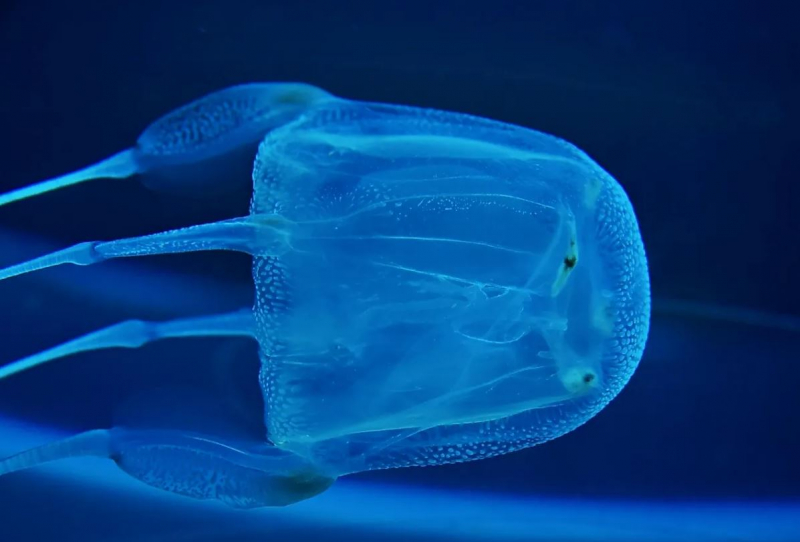
Photo: worldatlas.com 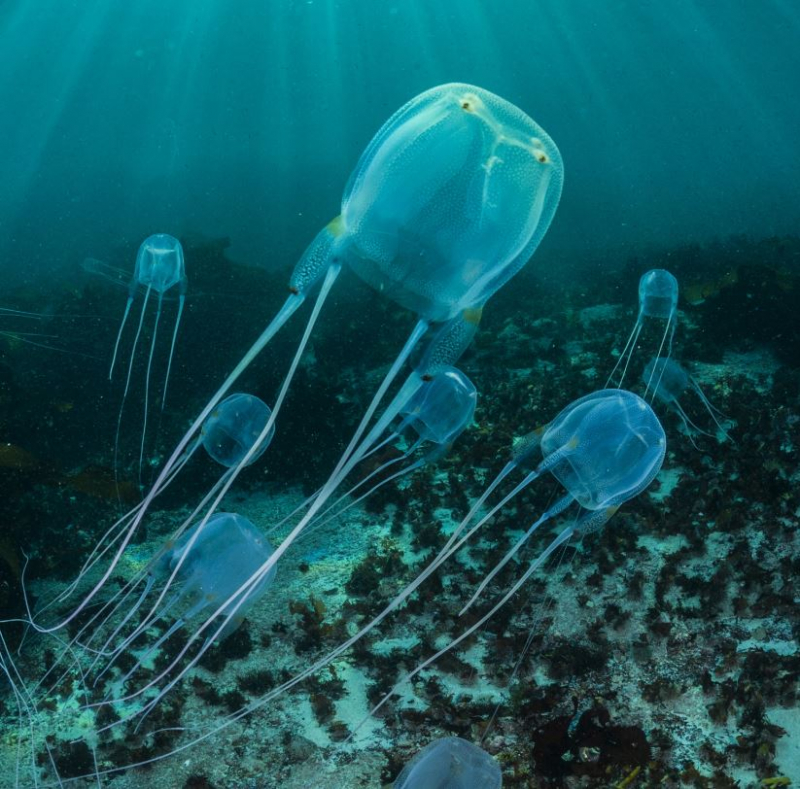
Photo: nationalgeographic.com -
The tropical and subtropical areas of the Indian subcontinent and Southeast Asia are home to the big, nonvenomous Indian python species. Other names for it include black-tailed python. Asian and Indian rock pythons are both snakes. It typically grows to a length of 3 m and is normally lighter in color than the Burmese python. One of the two largest nonvenomous python species found in India is the Indian rock python, also known as the Ajgar. The other is the Asiatic reticulated python. Because of how they kill, ajgar is regarded as one of the deadliest wild animals.
The color pattern of the rock python is whitish or yellowish, with blotched patterns that range in hue from tan to dark brown. Terrain and habitat have an impact on this. The Deccan Plateau and the Eastern Ghats often have lighter specimens than the hill forests of the Western Ghats and Assam. Pythons are all non-venomous snakes.
Even in their natural environment, they are sluggish and slow-moving. They are shy and rarely try to attack when assaulted. Locomotion typically involves "walking on one's ribs" and moving the body in a straight line. They have great swimming abilities and seem right at home in the water. They may spend several minutes completely submerged in water, but they normally prefer to stay close to the bank.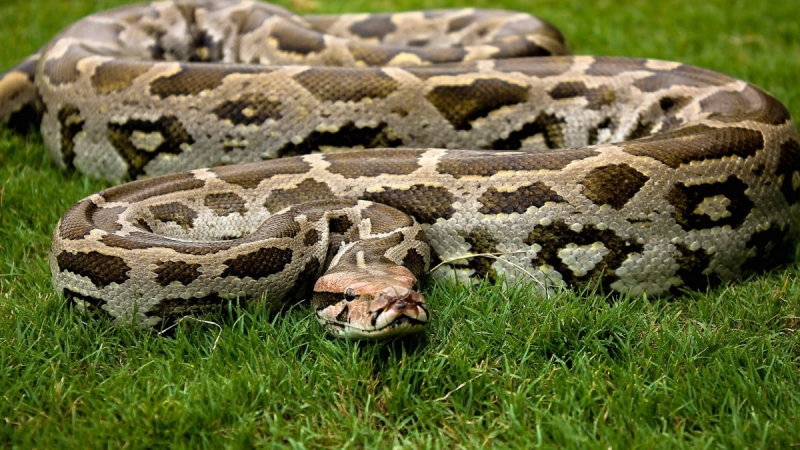
Photo: roundglasssustain.com 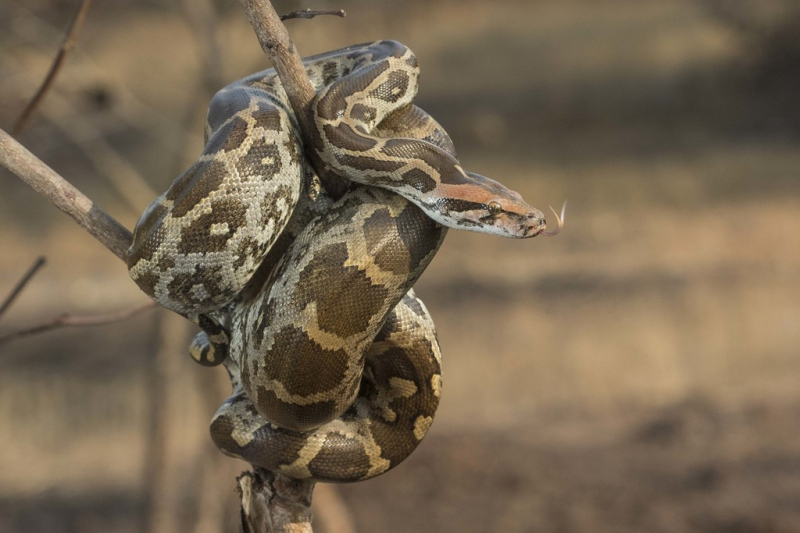
Photo: inaturalist.org -
The Indian cobra, also known as the spectacled cobra, Asian cobra, or binocleate cobra, is one of the "big four" species of a cobra that are to blame for the majority of snakebite incidents in India. It is also found in Pakistan, Bangladesh, Sri Lanka, Nepal, and Bhutan. It differs from the king cobra, which is a monotypic member of the genus Ophiophagus. In Indian mythology and culture, the Indian cobra is adored, and snake charmers are frequently seen with them.
The Indian cobra is a species with a robust build and a medium size. Its comparatively broad and extremely spectacular hood, which it grows when threatened, makes this type of cobra easy to recognize. Several specimens show a hood mark. This hood mark can be found at the back of the hood of the Indian cobra. There are two circular ocelli patterns joined by a curving line that resemble spectacles when the hood mark is present.
The oviparous Indian cobra lays its eggs between the months of April and July. In rat burrows or termite mounds, the female snake typically lays between 10 and 30 eggs, which hatch 48 to 69 days later. The hatchlings are between 20 and 30 centimeters) long. The venom glands in the hatchlings are fully functional, and they are self-sufficient from birth.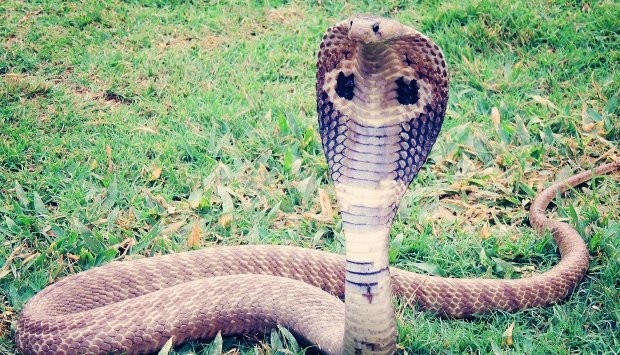
Photo: animalia.bio 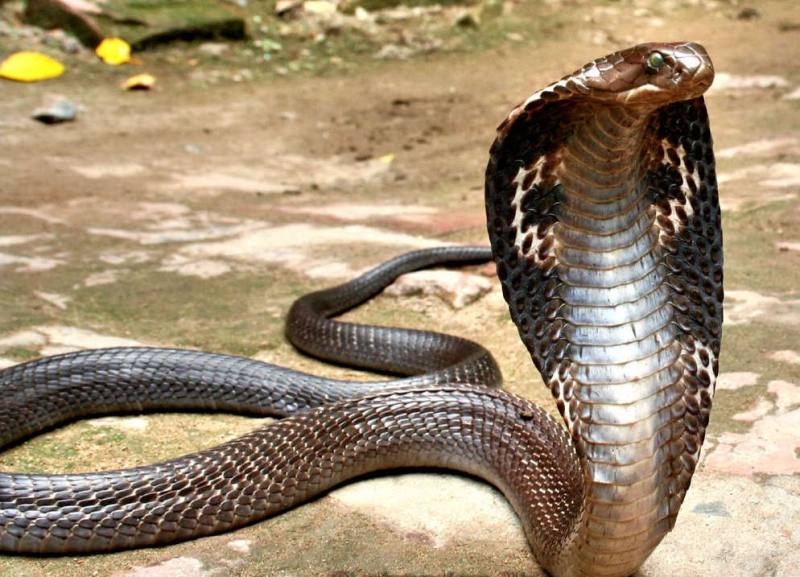
Photo: reptilerange.com -
The next position on the list of the most dangerous animals in India is Saw - Scaled Viper. A genus of poisonous vipers known as saw-scaled vipers or carpet vipers can be found in the arid regions of Pakistan, India, Sri Lanka, India, and the Middle East. They make a "sizzling" warning sound by rubbing different parts of their bodies together in a distinctive threat presentation. The Greek term for "viper" is transliterated as "Echis" in Latin. They are known as "saw-scaled vipers," and they include some of the species that account for the majority of snakebite cases and fatalities worldwide. There are presently 12 recognized species.
All species of this genus exhibit a recognizable threat display that consists of coiling their scales into parallel C shapes and rubbing them together to create a sizzling sound that resembles water on a hot plate. This is referred to as stridulation properly. This striding habit increases in speed and volume as they grow more irritated. This behavior is assumed to have developed to prevent water loss from occurring, such as while hissing. But according to some writers, this display was accompanied by a loud hissing. These serpents are dangerous and will bite from the location mentioned above. When doing so, they could lose balance and wind up heading in the direction of their attacker.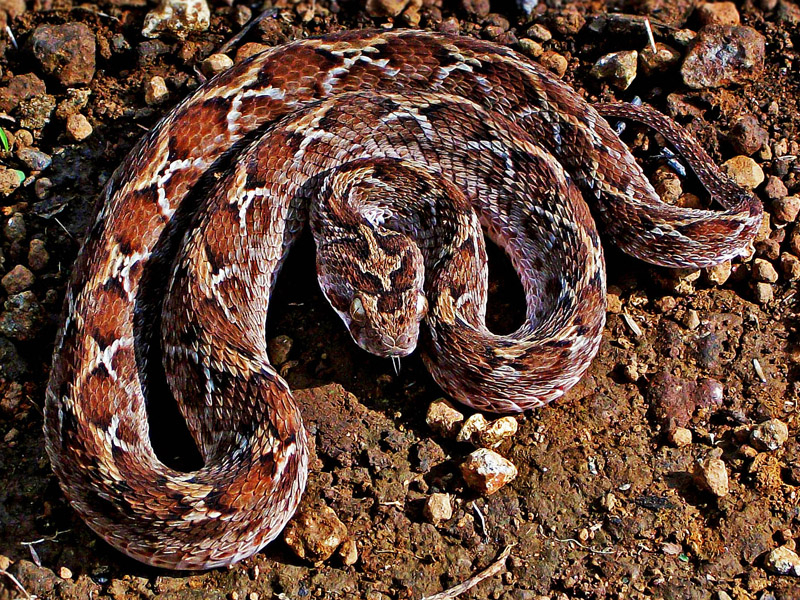
Photo: wikipedia Video: https://www.youtube.com/watch?v=RUG2fK1-ATg













